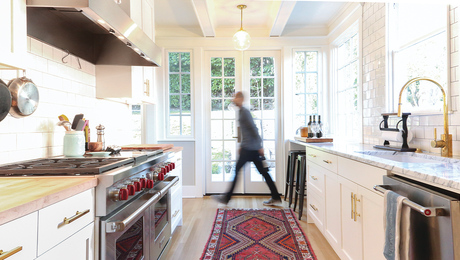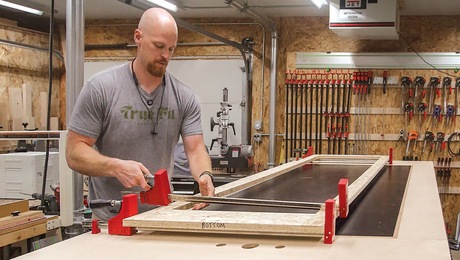Mango House
Deep roof overhangs and an open design help cool a house in the Caribbean.
Synopsis: An open design, including a two-story living room vented at the roof, helps keep air moving inside a guest house on St. Croix. Wide roof overhangs shield windows and walls from intense sunlight, and big decks offer plenty of opportunities for enjoying the view. A side bar discusses the use of borate to treat wood, instead of CCA.
Hurricane Hugo slammed into the island of St. Croix at dusk on Sept. 17, 1989. In the 12 hours that followed, Hugo thrashed its way along the spine of the island, traveling the 23 miles from east to west at a tortuous 2 mph. Hugo was a Category-5 hurricane, with sustained winds in excess of 150 mph, and the backside of the storm carried a cluster of tornadoes whose winds were estimated at 250 mph. No building on the island survived undamaged.
St. Croix, in fact, was devastated. The island had been green with tropical plants before Hugo; in its wake was a brown wasteland. Most buildings on the island were severely damaged. Many were destroyed. One of these badly damaged buildings was a single-story, three-unit dwelling in the hills overlooking Christiansted. The building was next to a house I had designed a few years earlier for Elizabeth and Michael Kaiser. After Hugo, the Kaisers acquired the wrecked building and asked me ti design a three-bedroom guest house on the same foundation.
A major part of my job was to design a house that took advantage of the climate conditions on St. Croix. To keep the house comfortable, natural cross-ventilation was used, rather than an elaborate mechanical cooling system. The woodframed second story includes 6 ft. wide roof overhangs to shield the walls and the windows from sunlight. And the new building is anchored solidly to the concrete slab and existing concrete-block walls so that the house would better resist storms like Hugo that might strike in the future.
Using what Hugo left
Most of the demolition on the existing structure had been done by the storm. The flat, wooden roof and all the windows had been not-so-neatly removed by Hugo, leaving the concrete slab and reinforced concrete-block bearing walls capped by steel-reinforced concrete bond beams. It was my intent to use as much of the remaining masonry and concrete structure as I could. The original 51-ft. by 28-ft. building was divided into four bays, each about 12-ft. wide, by concrete-block bearing walls. I decided that portions of the two middle walls should be removed to open up the first-floor living area. To complete the demolition, several interior non-load-bearing partitions were removed.
The remaining wall configuration provided an open first-floor plan that accommodates an entry foyer and a powder room, the living and dining areas, a kitchen and a library/bedroom with bath. I maintained an existing 1-ft. level change in the floor slab but changed its location slightly to separate kitchen and foyer spaces from the adjacent living areas.
The exterior walkway on the west side of the building made a perfect entry veranda when covered by a broad roof overhang. Beyond the kitchen is a covered deck leading to a swimming pool. On the second floor, two more bedrooms, each with a bath, were placed above the remaining bearing walls of the north and south bays. This plan left the two center bays open with a two-story living room between them. A wooden bridge, partially supported by 3/8-in. steel tension rods hung from the roof, connects the two bedrooms and provides access to a stair.
Fine Homebuilding Recommended Products
Fine Homebuilding receives a commission for items purchased through links on this site, including Amazon Associates and other affiliate advertising programs.

Not So Big House

All New Bathroom Ideas that Work

100-ft. Tape Measure

























